What are Children’s Play Schemas?
In case you need a recap on Play Schemas then I highly suggest you head to our blog ‘What are Play Schemas?’ before reading ahead.
Have you ever wondered why your child purposely knocks over your block castle, hides in small boxes, throws their food, lines objects up or collects rocks? These are not ‘bad behaviours’ but rather natural developmental urges (called schemas) that suggest a healthy child.
The repetitive action of a schema allows a child to practice and construct meaning until they have mastered the understanding of that schema. Being aware of play schemas helps in two ways:
It helps parents and educators to differentiate between ‘behaviour’ vs ‘natural urges’, moving past the belief that a child is just being ‘difficult’
It helps parents and educators to plan learning environments that support the development and mastery of schemas
To summarise, play schemas are natural, uncontrollable and totally necessary urges that all children have at some point or another.
At Growing Kind we focus on the nine most evident play schemas in the early years. Please note there are many more:
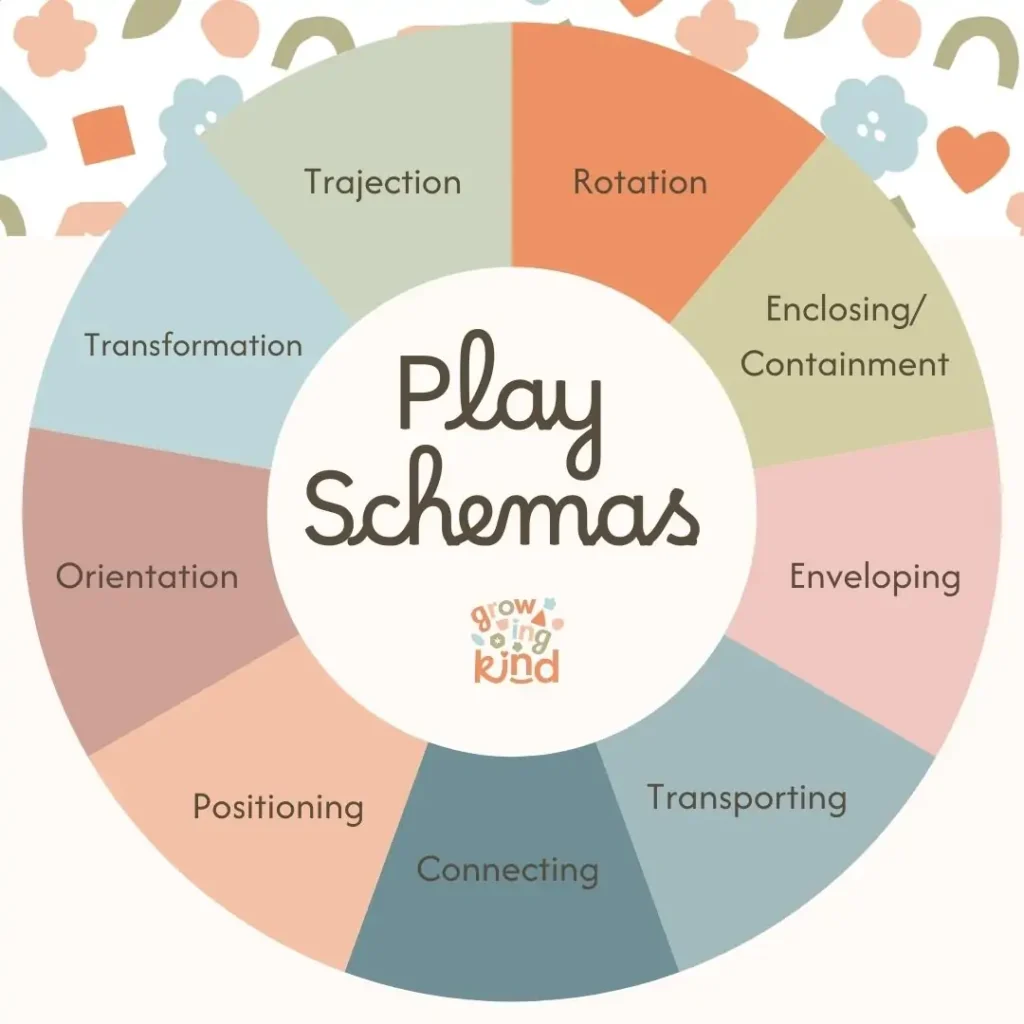
Below is a list of resources and activity ideas to help support play schemas in children aged 0–5 years — whether you’re at home or in an educational setting.
The order roughly follows how schemas often emerge developmentally, but remember: children do not follow a set checklist! Every child is unique, and multiple schemas can appear at the same time or in a different sequence.
Enveloping Schema
Enveloping is a highly evident schema, involving the child covering themselves or objects. This might look like wrapping toys in paper, laying fabric on top of dolls, playing peekaboo with silks, climbing into boxes or kitchen drawers, or hiding your keys in a cupboard.
Real-life example: Ava, a toddler in our Schema Course, spent most of her play sessions wrapping toy animals in tissues and tucking them into the couch cushions. This repeated action helped her process feelings around safety and comfort — particularly during a period of separation anxiety.
Support at home or in the classroom:
Provide fabrics, silks, scarves, and wrapping paper
Offer small boxes, bags, and containers to hide or cover objects
Create dens or blanket forts for safe body enveloping
Our favourites:
- Posting boxes are a wonderful way to support enveloping through repetitive hide-and-reveal play. Children love pushing objects into slots, dropping them through holes, and opening compartments to retrieve them again. This encourages fine motor control, object permanence, and focused exploration. Try using a variety of objects to post, such as felt balls, shapes, or coins, and rotate the materials to keep it fresh and engaging.
- Wooden rainbows are not only beautiful to look at, they are incredibly versatile for schematic play. Children can use the curved arches to cover objects, build tunnels, or create nests for animals or dolls. When used for enveloping, they often become shelters or layered hiding spots. They also support enclosing, positioning, and stacking, depending on how children choose to engage with them.
- Play silks are lightweight and open-ended, making them ideal for enveloping play. Children may wrap toys, cover themselves, build blanket caves, or play peekaboo. Silks help children experiment with layering, hiding, and revealing — all part of the enveloping urge. They are also a lovely resource for pretend play, dress-ups, and sensory regulation.
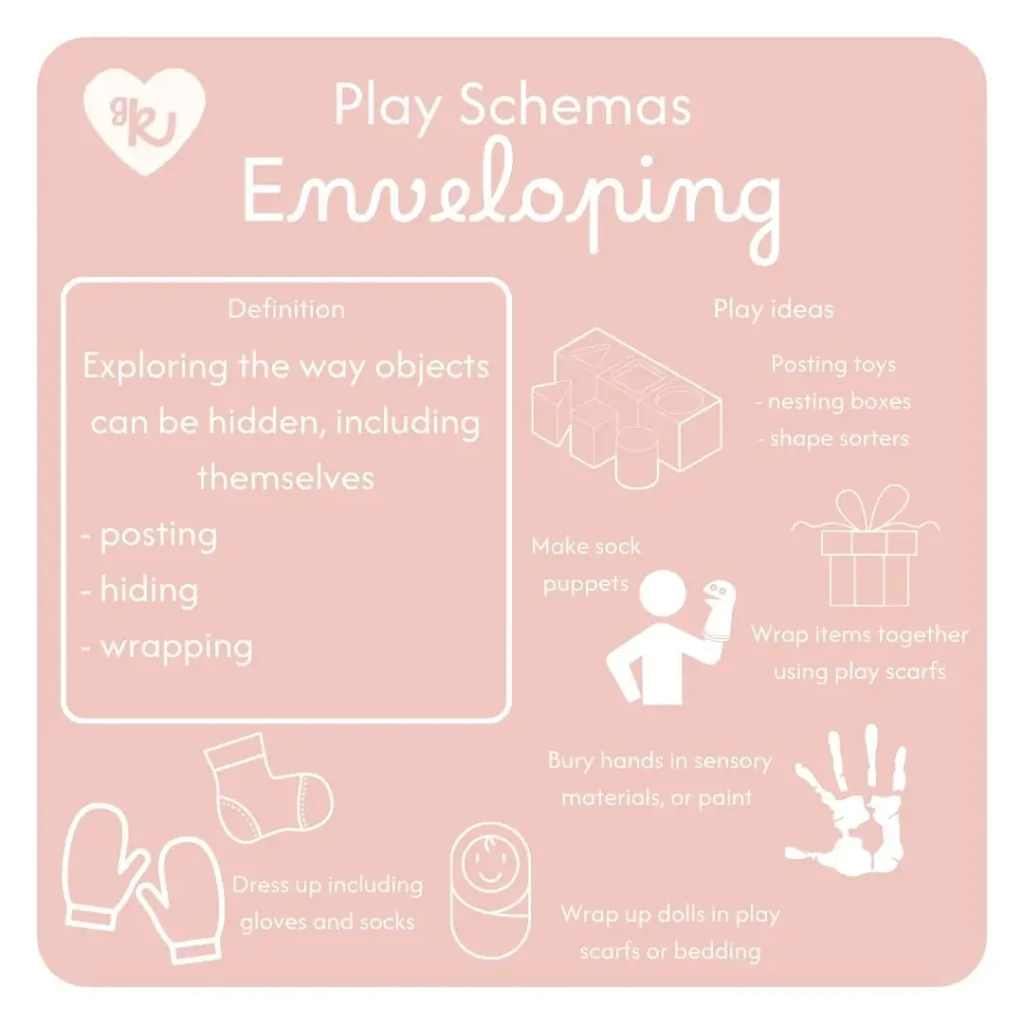
Enclosing Schema
Enclosure involves drawing or creating a barrier or enclosure. It may involve connecting items to build a fence or drawing circles around objects. At dinner time, this might look like moving food to the edge of the plate.
The difference between the enclosing schema and enveloping schema is that enclosure usually forms a parameter/fence around the sides of something, whereas enveloping has it covered top and/or bottom too.
Real-life example: In one of our kindy classrooms, a child spent 20 minutes building small ‘homes’ for every felt animal using magnetic tiles — even refusing to leave for lunch until each animal had its “own space.” Through this schema, he was developing early maths skills like perimeter and spatial awareness.
Support at home or in the classroom:
Use magnetic tiles, blocks, train tracks, or sticks to form enclosures
Encourage drawing enclosures around items
Offer small world setups where children can ‘fence in’ or surround objects
Our favourites:
- Small fences or barrier pieces are perfect for children who love to build around animals, vehicles, or other toys. They may use them to create pens, homes, or enclosures in small world play. Fences offer a visual and physical way to practise enclosing, helping children define space, understand limits, and explore the concept of ‘inside’ and ‘outside’.
- String is a versatile and open-ended tool for enclosing. Children may use it to wrap around objects, create boundaries on the floor, or build webs between furniture legs. This kind of play supports creativity, problem-solving, and the development of fine motor skills. Supervision is always recommended when using string, especially with younger children.
- Blocks are an essential resource for children exploring enclosing. They might build walls around toys, make squares or circles, or place figures inside constructed boundaries. This repeated action strengthens spatial reasoning and early planning skills.
Offer a variety of block types, including wooden unit blocks, magnetic tiles, or nature-inspired shapes, to encourage imaginative and structured play.
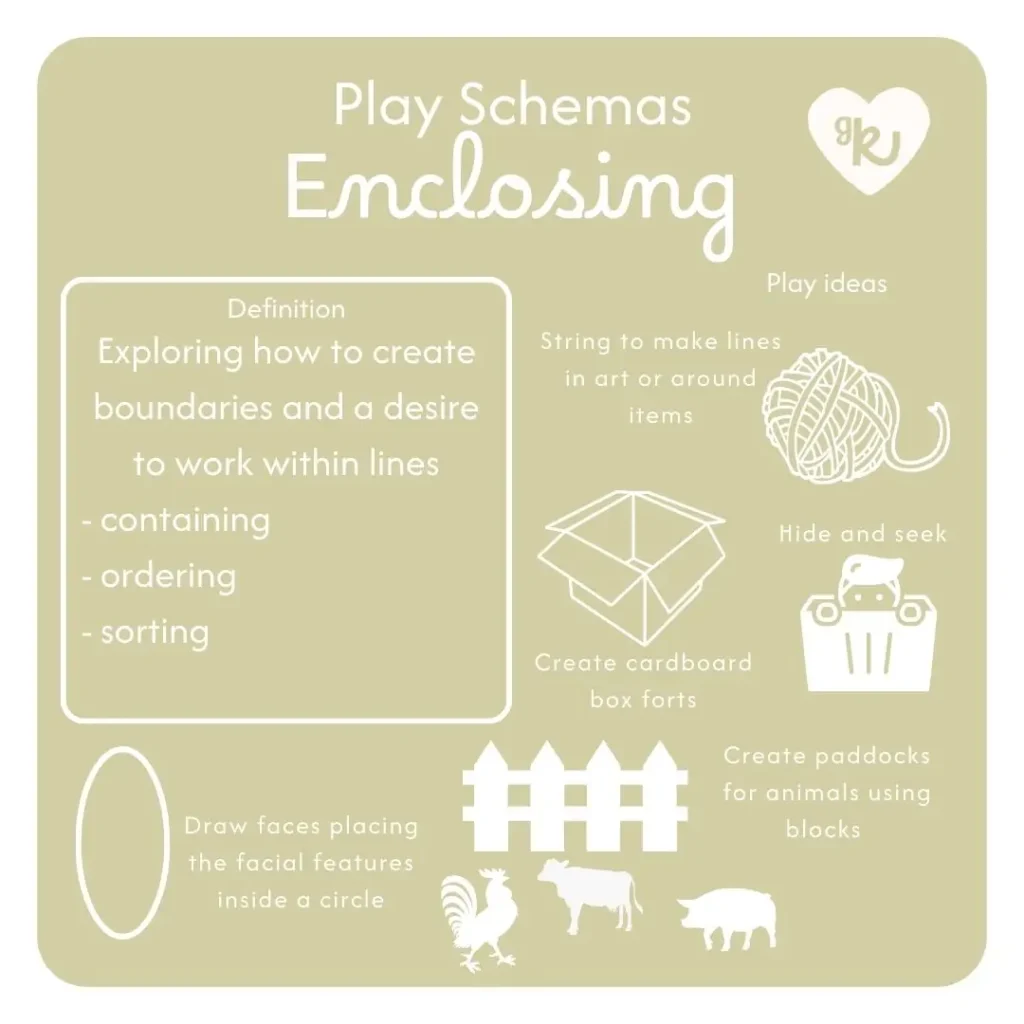
Connecting Schema
Connection involves joining objects together. It might involve taping things together, connecting blocks or LEGO, or joining train tracks. This can also involve connection and disconnection, such as building a castle and knocking it over.
Real-life example: A three-year-old in our course would thread wool between chairs to connect “rooms” in her imaginary house. When her younger sibling walked through and broke it, she repeated the process without frustration. This schema helps build persistence and emotional flexibility.
Support at home or in the classroom:
Offer tape, string, magnets, building blocks, and clips
Include threading activities, paper chains, and connecting train sets
Allow safe opportunities to build up and knock down structures
Our favourites:
- Masking Tape: Simple, budget-friendly, and endlessly fun, masking tape is a favourite for connecting just about anything. Children may use it to tape cardboard boxes together, link craft items, or create long roads across floors and furniture. The act of tearing, sticking, and connecting helps build fine motor skills and satisfies that innate urge to join things. For younger children, pre-cut strips or easy-peel tape holders are helpful. For older children, try combining tape with recycled materials to encourage engineering and creative construction.
- Magnetic tiles are a brilliant resource for encouraging connection and disconnection play. Children love the satisfying click of magnets joining, and enjoy building towers, fences, houses, and more. They also learn about balance, symmetry, and magnetism while engaging in schematic play. These tiles also support enclosing and enveloping schemas when children start to build structures around figures or objects. A must-have for early STEM exploration and collaborative play.
- Squigz are colourful, silicone connectors that stick together with suction, perfect for small hands. Children love the popping sound as they pull them apart, making them an ideal tool for both connection and disconnection. They can be used on tables, windows, bathtubs, or even on the floor to build 3D structures and imaginative creatures.
They also work as a fine motor tool, strengthening hand muscles and improving coordination. Ideal for both quiet play and sensory seekers who enjoy tactile stimulation.
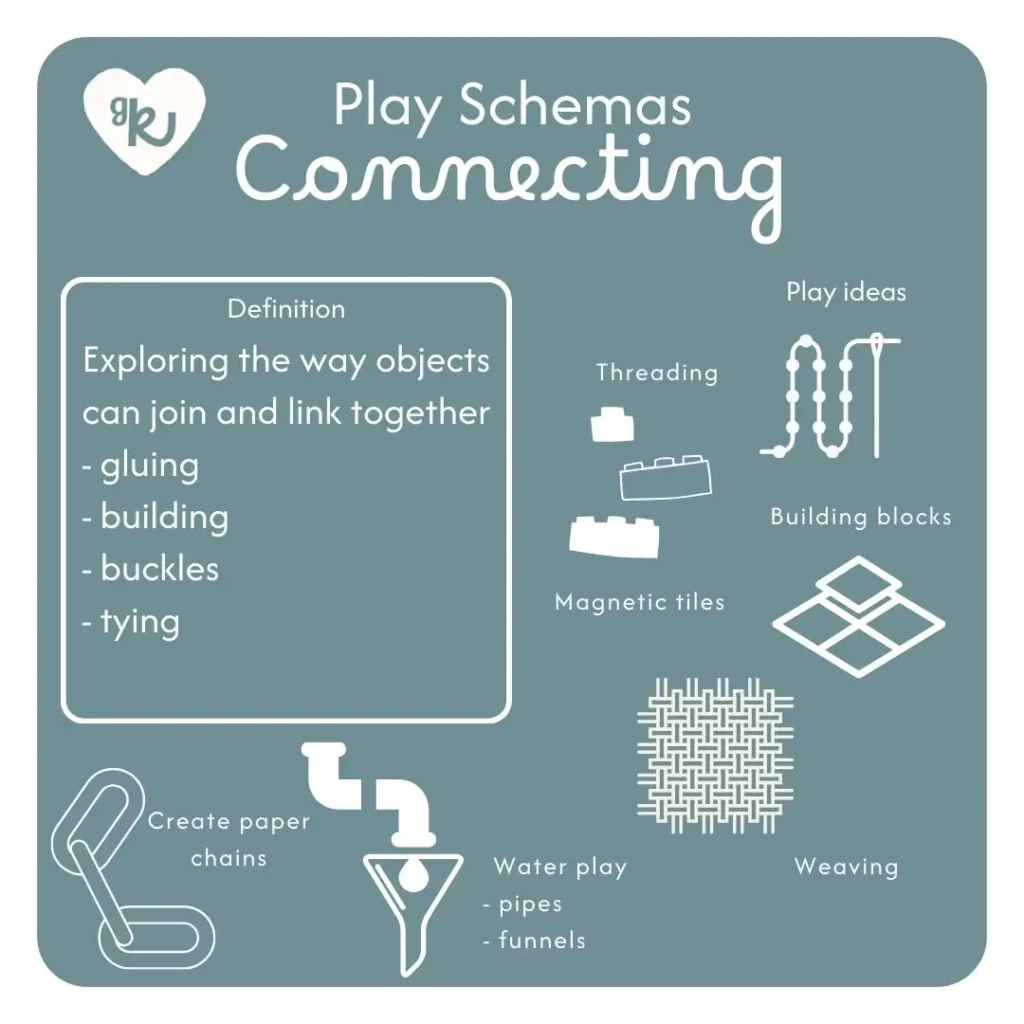
Rotating Schema
Rotation involves spinning, twisting, rolling or turning. Children exploring this schema are generally attracted to and may benefit from things with wheels, spinning tops, ring-a-rosie games, riding bikes in circles, or using screwdrivers.
Real-life example: One child would roll toy cars in circles for long periods, seemingly “ignoring” other activities. Once his need for rotation was supported (with spinning tops, scarves, and a toy drill), his focus and participation in group activities noticeably improved.
Support at home or in the classroom:
Include spinning tops, wheels, turntables, or salad spinners
Encourage ring games, merry-go-rounds, or bikes and scooters
Offer loose parts like bottle caps and spools for twisting and turning
Our favourites:
- A classic toy with timeless appeal, spinning tops invite children to explore cause and effect, rhythm, and balance. Whether they are wooden or plastic, large or small, spinning tops offer a visual and tactile way to satisfy the rotation urge. Watching the spin slow down or tip over also helps children develop focus and patience. Offer a variety of tops with different colours, weights, and textures for added sensory interest.
- Wheeled toys like cars, trucks, and trains are perfect for children exploring rotation. Not only do the wheels spin, but children often push them in circles, turn them over to inspect how the wheels move, or spin them repetitively. These toys also support schemas like trajectory and transporting, depending on how they are used. Try pairing wheeled vehicles with ramps, circular tracks, or spinning mats for an added layer of play.
- Spin Again is a fun, gravity-powered stacking toy that children absolutely love. As each disc spins down the corkscrew pole, children engage in visual tracking, hand-eye coordination, and of course, rotation. This toy also encourages problem-solving, as children experiment with colour patterns and stacking sequences. It is a great option for toddlers and preschoolers, and offers hours of independent play.
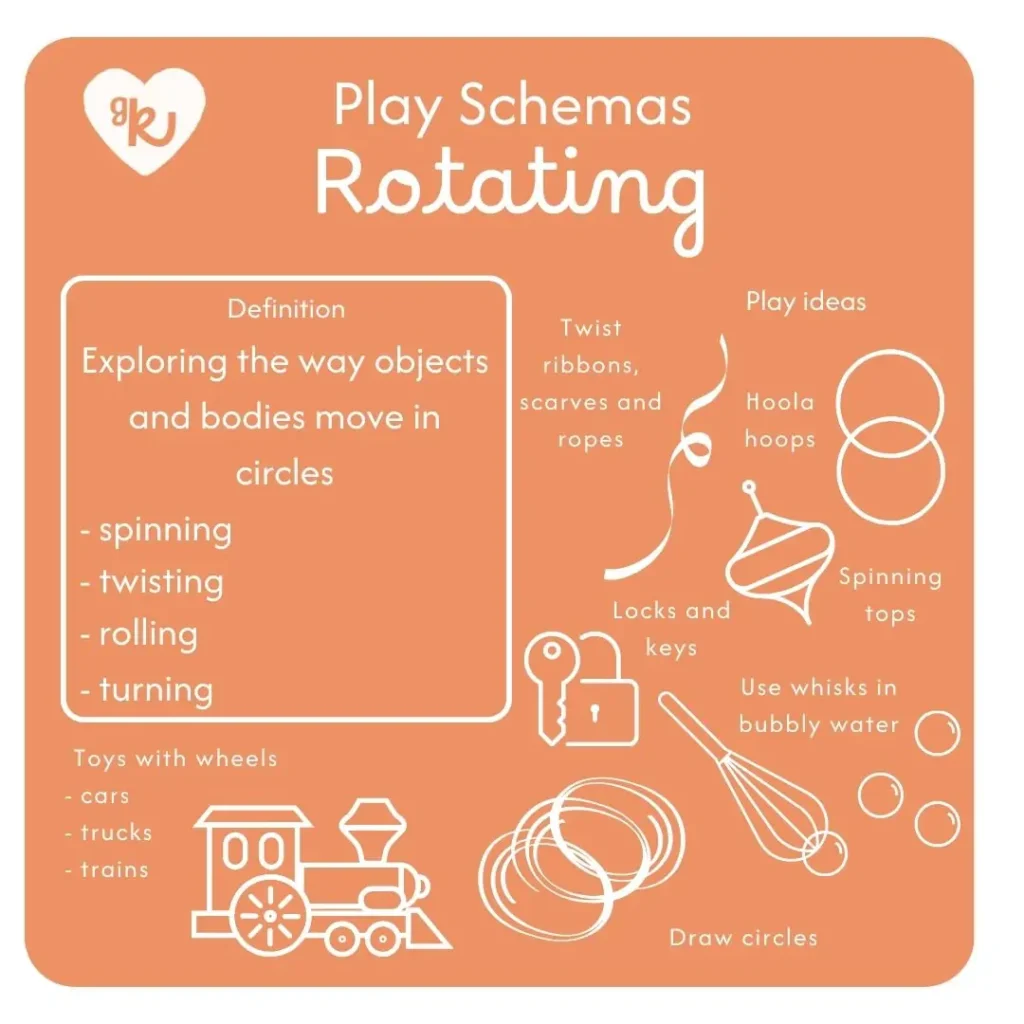
Trajectory Schema
Trajectory involves dropping, throwing, kicking, or swinging items — perhaps the most misunderstood schema of them all. A child exploring trajectory may throw food at the table, launch toys, kick objects, enjoy swinging, or drop things into containers.
Real-life example: One parent in our Schema Course felt embarrassed that her son constantly threw toys. After learning about trajectory, she introduced a ball pit and soft target zone. Within a week, the destructive throwing stopped — and the urge was safely redirected.
Support at home or in the classroom:
Provide balls, beanbags, and containers for throwing into
Use ramps or water play to explore direction and motion
Create outdoor zones for kicking, climbing, and swinging
Our favourites:
- Felt balls are a fantastic loose part that support a range of schemas, especially trajectory. Young children love throwing, rolling, or dropping them into containers. As children grow, the same felt balls can be used for counting, sorting, and colour recognition activities. For children who are still mouthing, we recommend larger felt balls (around 5 cm) to ensure safe play. Older children can enjoy a variety of sizes to suit different types of exploration and learning.
- Play silks are a beautifully open-ended resource, suitable for all ages and developmental stages. For infants, silks offer wonderful sensory experiences, and are light enough to be tossed and explored safely, aligning with the trajectory schema. As children grow, silks become capes, wraps, peekaboo cloths, or building materials in small world play. They also support schemas like enveloping, transporting, and enclosing, depending on how they are used.
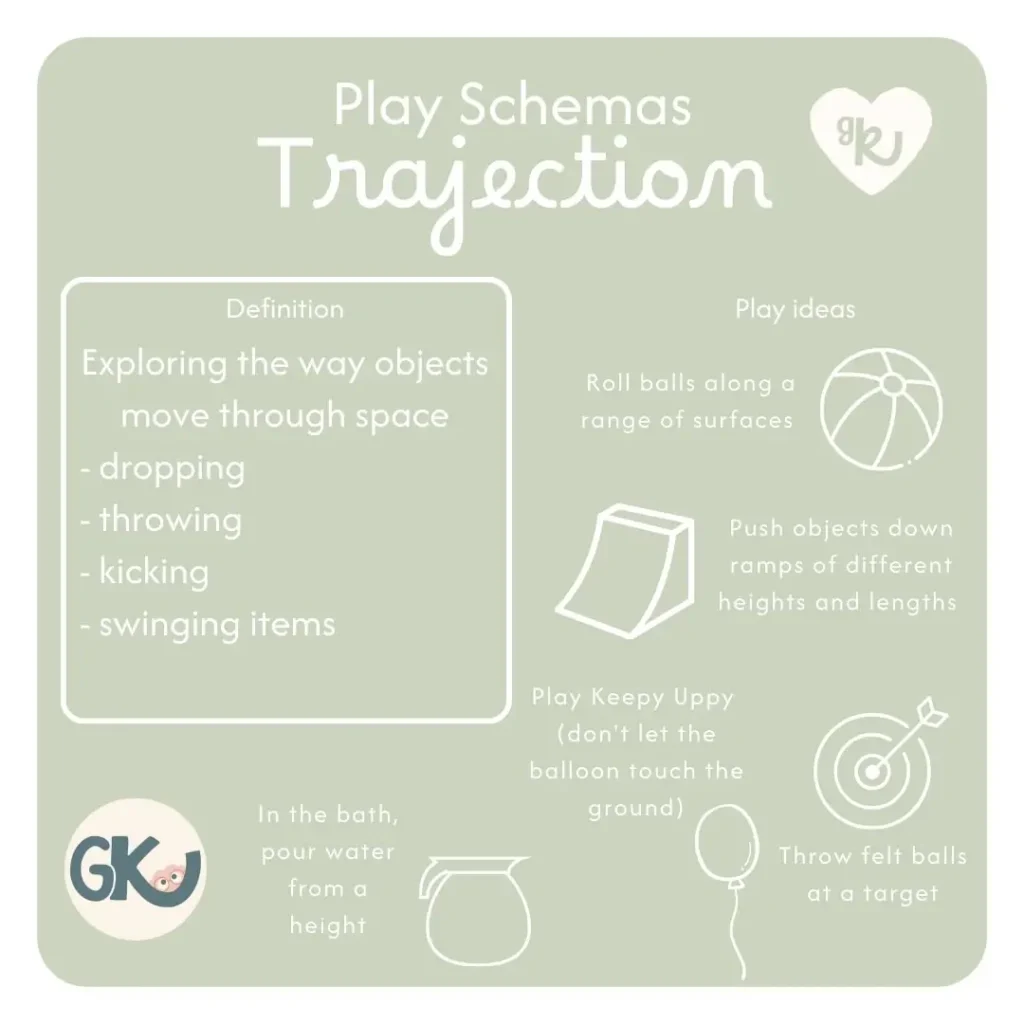
Positioning Schema
Positioning involves lining up toys, ordering books, arranging items symmetrically or turning cups upside down. You might notice children become upset when items are moved — it is part of their urge to make order and meaning.
Real-life example: A child at home was frequently lining up matchbox cars and becoming upset if a sibling moved them. Instead of interrupting, the parent joined in — commenting on colour, length, and position. This moment became a shared connection and a chance to build language and early maths.
Support at home or in the classroom:
Provide matching sets like pegs, cars, or animals
Offer trays or mats for organising by colour, size, or shape
Use shelf displays or sorting activities to explore symmetry and order
Our favourites:
- Loose parts like wooden coins, rings, felt shapes, gems, or pebbles are perfect for children who love to position items with precision. They might create lines, grids, patterns, or mandalas, often repeating the same layout multiple times. Offer a variety of sizes, colours, and textures, and provide trays or placemats to help children create and organise their arrangements. This kind of play also nurtures creativity and mindfulness.
- Puzzles naturally encourage positioning, as children must rotate, flip, and fit pieces into place. Whether it is a chunky toddler puzzle or a more complex jigsaw, puzzles help children develop fine motor skills, concentration, and an understanding of spatial relationships. You can also offer shape sorters, tangrams, or magnetic pattern boards for extra variation.
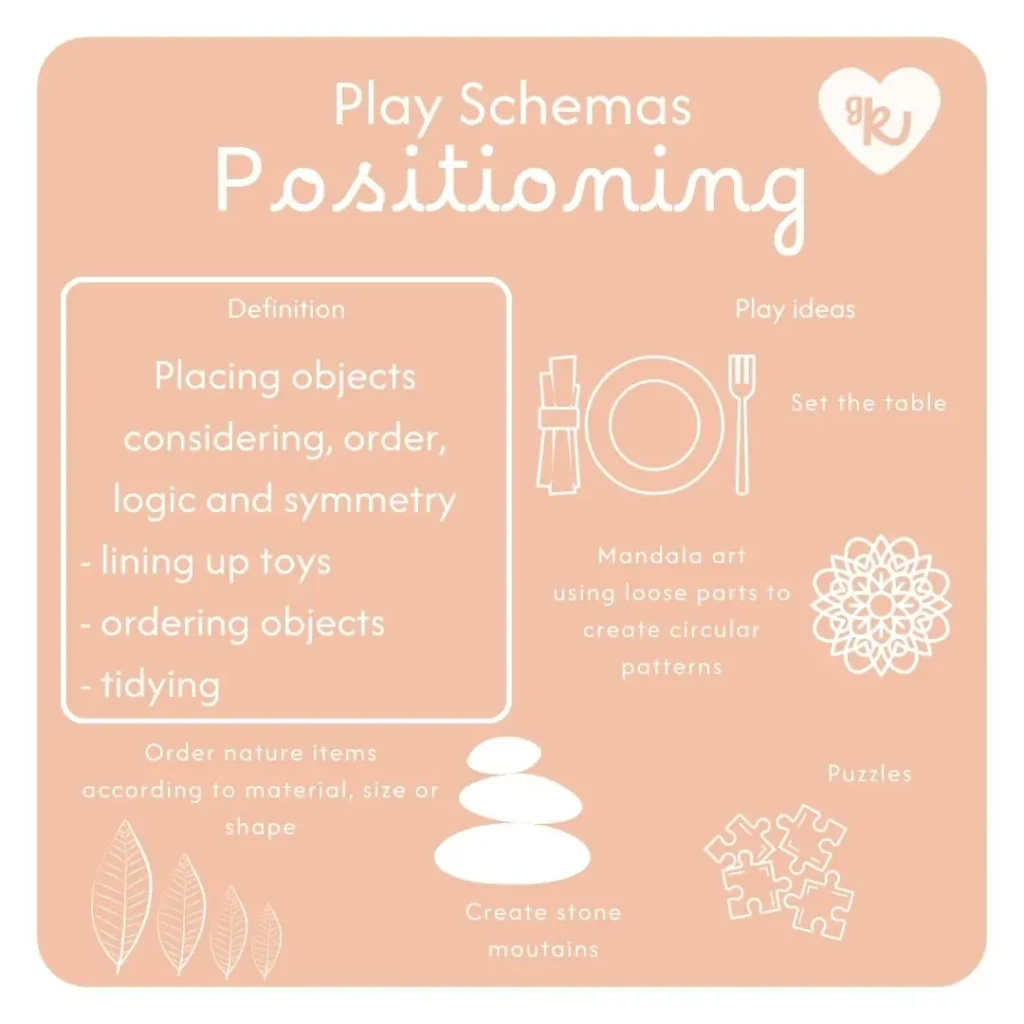
Transportation Schema
Transporting involves moving objects from one place to another. A child may like to move items using baskets, wheelbarrows, pockets, trolleys, or simply their hands.
Real-life example: One four-year-old in our course loved filling her doll pram with blocks, wheeling them to the other side of the room, and then repeating. Educators initially saw it as avoidance. But once we recognised the transporting schema, we added more trolleys and baskets — and she became a confident group player.
Support at home or in the classroom:
Offer baskets, trolleys, prams, or small wheelbarrows
Include loose parts like blocks, pebbles, or animals to move
Encourage delivery games and real-life role play like “post office”
Our favourites:
- Baskets are an ideal resource for transporting. Children love filling them with blocks, toys, or loose parts, then moving them from one location to another. Baskets with handles make it easy for young children to lift and carry, building gross motor skills and encouraging purposeful movement. Try offering different sizes and materials to invite sorting and comparing as they play.
- Pots, pans, bowls, and other kitchen items are perfect for collecting, transferring, and pouring. Children enjoy the clinking sound of objects inside, the sensory feedback of weight and texture, and the satisfaction of emptying and refilling. These items can be used indoors or outdoors, especially in sand, water, or mud play, and support imaginative cooking and role play too.
- Buckets are a transporting favourite, especially in outdoor play. Children love filling them with sand, water, pebbles, or other treasures, then carrying them to a new destination. This repeated action develops strength, coordination, and a sense of independence.
Use buckets of different colours or sizes to explore concepts like capacity and measurement through play.
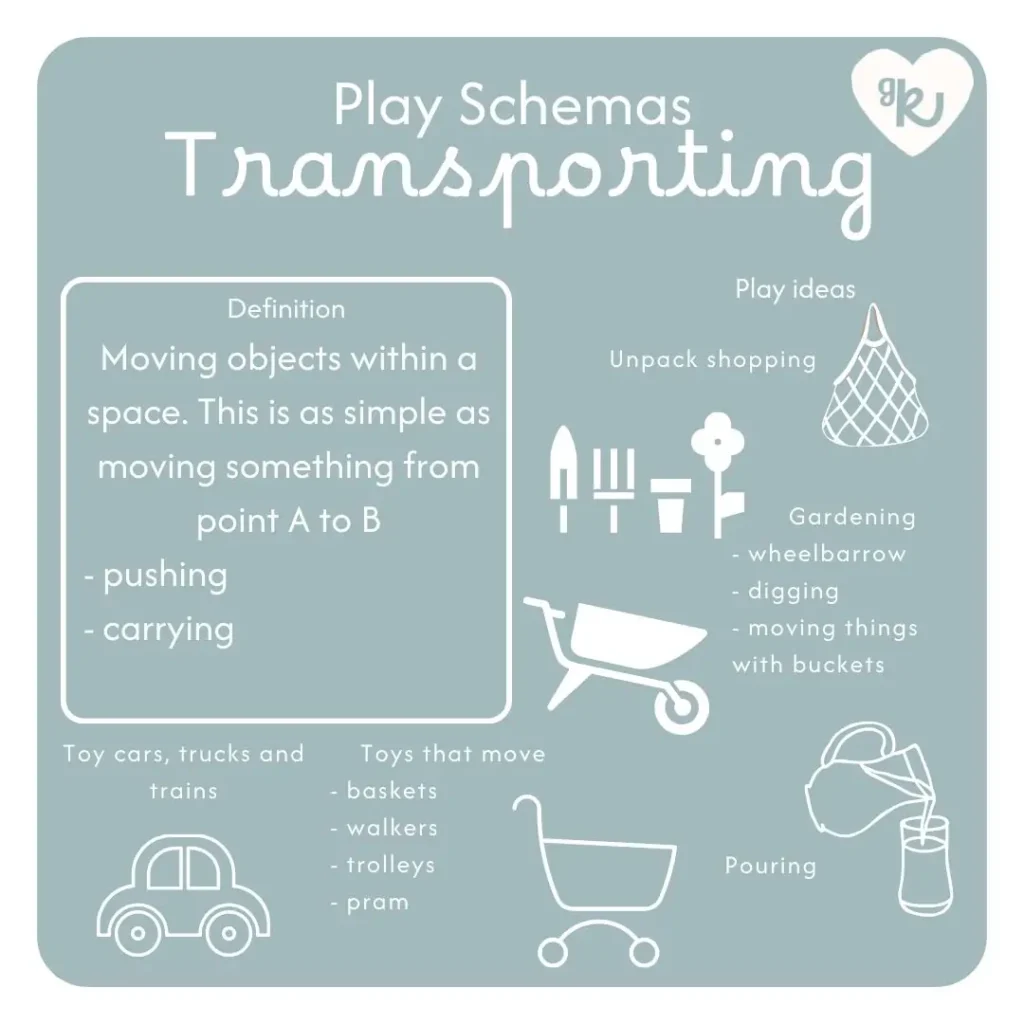
Transformation Schema
Transforming involves changing the state of something. This might be visual transformation like mixing, freezing, or dissolving. Some examples include a child who washes their hands repeatedly with soap, adds chalk to water, or plays with mud for hours.
Real-life example: A kindy child consistently mixed different clays and paints, often creating ‘soup’ in the mud kitchen. This schema was a rich invitation into conversations around science, colour theory, and imaginative storytelling.
Support at home or in the classroom:
Provide sensory trays with water, sand, or oobleck
Offer opportunities for mixing paint, clay, or nature items
Try freezing, melting, or drying activities to explore change
Our favourites:
- Play dough is one of the most accessible and powerful tools for transformation. Children love squashing, rolling, mixing, and shaping it, watching it transform in their hands. It encourages creativity, strengthens fine motor skills, and provides a calming sensory outlet. Add nature items, dough tools, or scents to enhance the experience and encourage storytelling or role play.
- Potion kits offer magical and hands-on transformation play. Whether mixing coloured water, adding natural materials, or creating bubbling reactions, potion play allows children to experiment with texture, colour, and cause and effect. These kits are perfect for encouraging imaginative thinking, scientific inquiry, and social interaction when shared with others.
- Using a mortar and pestle gives children a real-world way to grind, crush, and transform natural materials like dried flowers, herbs, or chalk. The rhythmic movement supports sensory regulation and fine motor development, while also satisfying the urge to change one thing into another. This tool is a beautiful way to slow down and connect with nature, especially in outdoor or quiet play spaces.
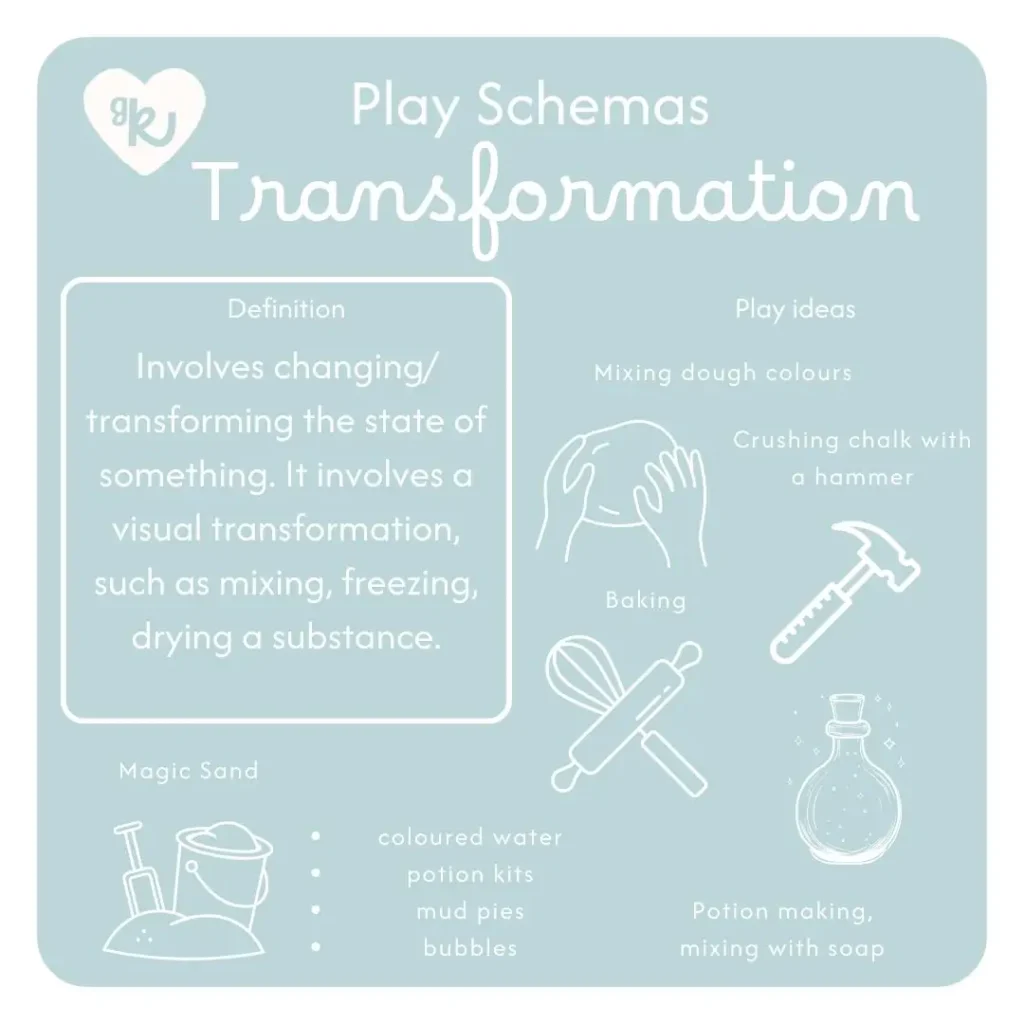
Orientation Schema
Orientation involves exploring different viewpoints, angles, and body positions. Children engaging in this schema might hang upside down off the couch, tilt their head to look at things, crawl under tables, climb to higher ground, or look through binoculars and mirrors.
Real-life example: A child in our Schema Course was constantly found lying sideways on the floor to view picture books, or climbing under the sensory table to “see it from underneath.” At first this was seen as distraction — until we recognised her need to explore perspective. We added periscopes, magnifiers, and low climbing frames to her environment, and her engagement increased dramatically.
Support at home or in the classroom:
Provide ramps, cushions, tunnels, and low platforms
Offer magnifying glasses, periscopes, or upside-down books
Include swings, monkey bars, or yoga poses to explore body movement
Our favourites:
- A magnifying glass encourages children to explore objects closely and from different angles. It supports orientation by inviting children to shift their body position, lean in, and look underneath or behind objects. This tool also enhances observation skills and sparks curiosity in both indoor and outdoor settings. Use magnifying glasses during nature walks, treasure hunts, or science explorations.
- Microscopes, even simple child-friendly versions, allow children to view the world in entirely new ways. Looking at familiar objects under magnification challenges their perception and encourages them to reorient their thinking and physical positioning. Introduce natural materials like leaves, petals, or sand for close-up discovery and early scientific learning.
- Slack lines are a brilliant physical resource for orientation and balance. As children walk, crawl, or balance on them, they are engaging their vestibular system and challenging their body awareness. These activities help build core strength, coordination, and confidence. Set up slack lines low to the ground for safety, and offer hand support ropes for beginners.
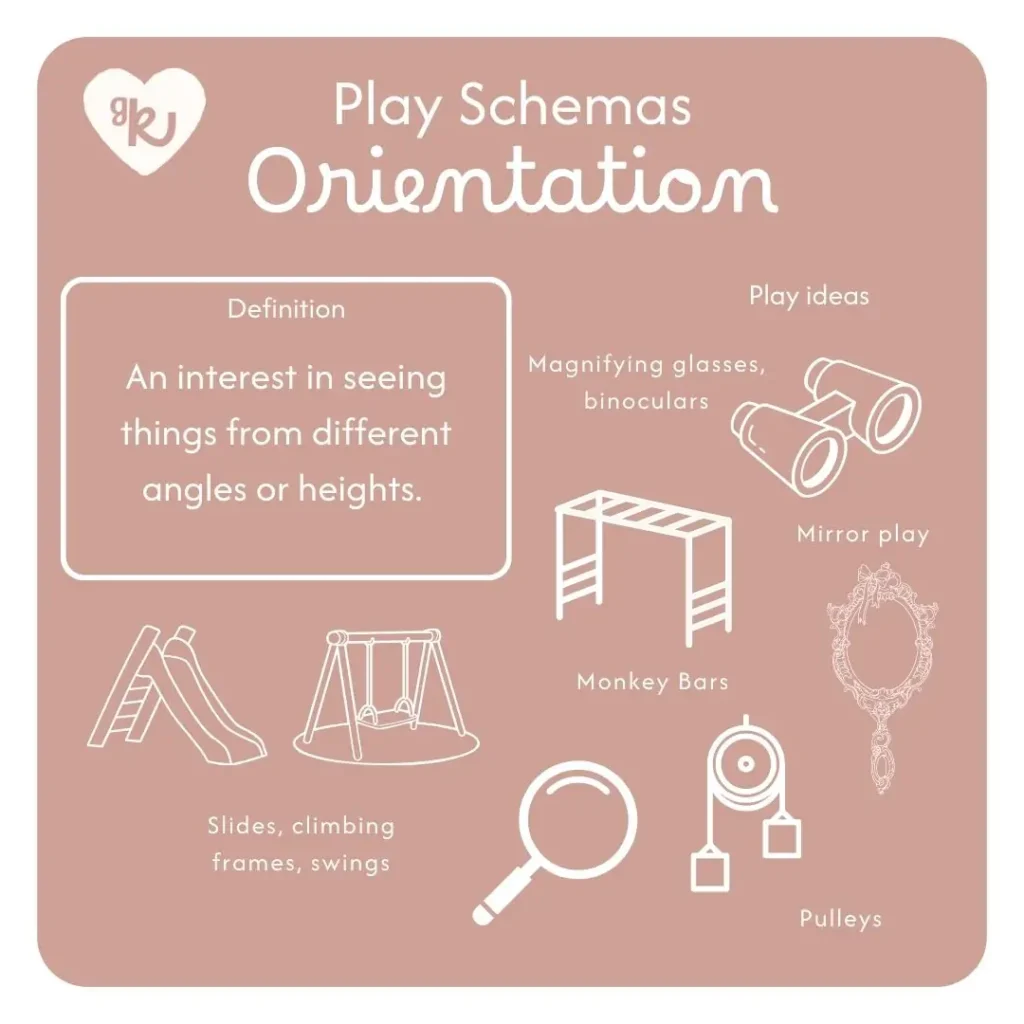
When and how do schemas appear?
Schemas usually become quite evident in children from around 6 months of age and remain visible for a few years. One schema is often more dominant for a while and then fades as a new one emerges. However, most children practise multiple schemas at once.
Not all children display strong schematic urges in the same way — and that is okay. Even adults engage in schemas, but we have mastered these skills and our play urges are more subtle. (Think: puzzle sorting, rearranging your bookshelf, or spinning your keys!)
What is my role as an educator when viewing children through a schematic lens?
By acknowledging play schemas in children, you will be able to better inform your planning cycle to meet each individual child’s developmental needs.
Observe → Analyse → Plan → Reflect
Experienced educators build environments that support the development and mastery of schemas. This means having a variety of loose parts, open-ended materials, and spaces for different types of play — from quiet corners for enveloping, to open space for trajectory and rotation.
The Brain Science Behind Play Schemas 🧠
From a neuroscience perspective, schemas are brain-building behaviours. When children repeat a specific action, they are strengthening neural pathways that help them organise sensory input, develop coordination, understand cause and effect, and self-regulate emotions.
In our Schema Course, we dive deeper into:
How schemas relate to executive function and cognitive growth
Practical ways to support children with differing sensory needs
How to use schemas to reduce challenging behaviour in a respectful and brain-aligned way
These insights are explored further in our Schema Course, designed to help parents and educators nurture development through play.
Blog written by Amie Muir
– Bachelor of Early Childhood Education
– Master of Educational Neuroscience
Amie is a passionate early childhood educator, business owner, and advocate for play-based learning. With experience teaching in both state and independent schools, directing long day care centres, and writing educational policy, she brings a wealth of real-world knowledge to her work. Her expertise in educational neuroscience helps bridge the gap between theory and practice, empowering parents and educators to support children’s development through meaningful, brain-aligned play.
Schema Based Resources:
At Growing Kind, you can browse and shop resources by schema, making it easier than ever to support your child’s learning through meaningful play. Visit Growing Kind to find toys, tools, and sensory resources tailored to each developmental urge.
Click the categories below to shop for children based on their schematic development:

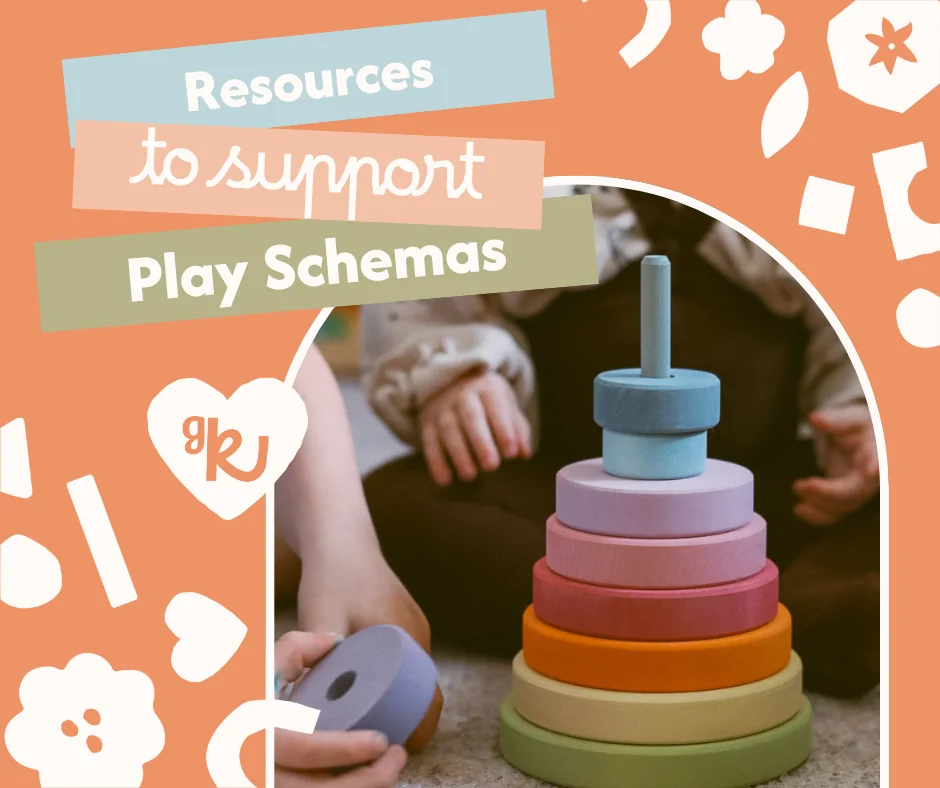





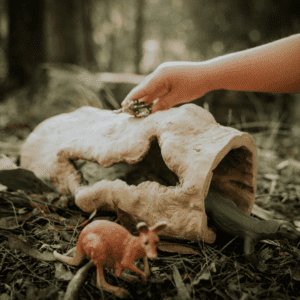
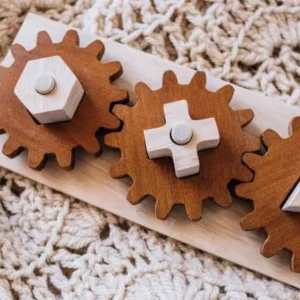


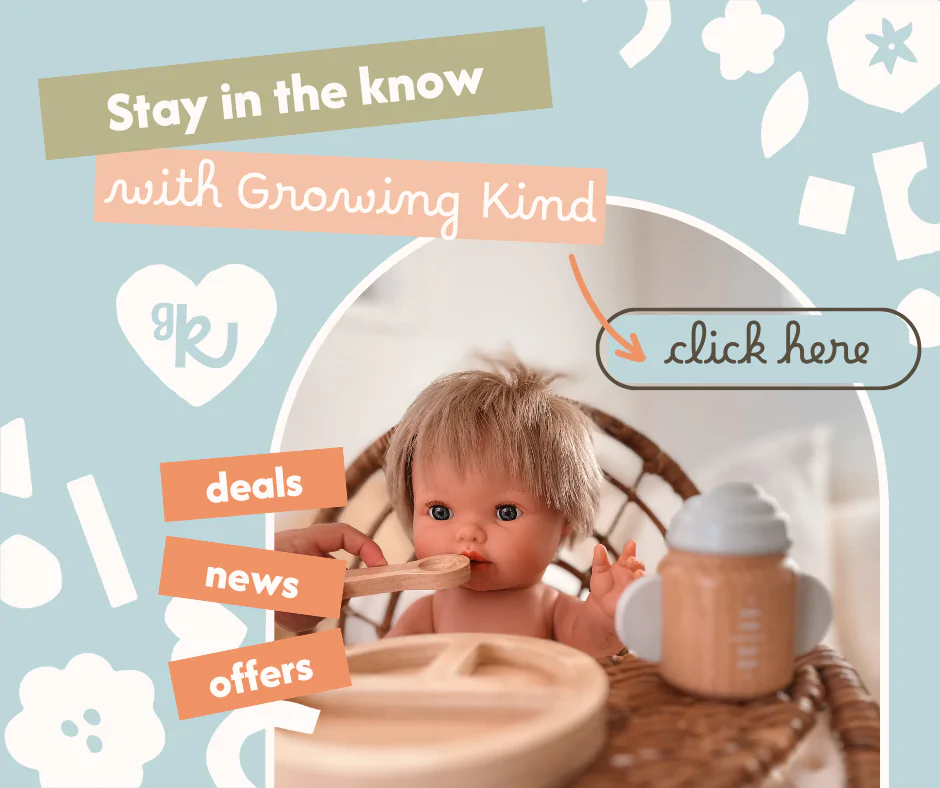

10 comments
I love these can you email these to me please
Hey Monika, We have just added a clickable PDF download to this post. Thanks Amie
Cam you please email this to me as the pdf give me an eŕror. Thank you.
Hey Judith, I have just updated the link. I apologise it didn’t work previously: https://growingkind.com.au/wp-content/uploads/2021/09/5.-Play-Schemas-Resources-to-support.pdf
Can you please email this to me as the pdf give me an eŕror. Thank you.
Hey Jude, I have just updated the link. I apologise it didn’t work previously: https://growingkind.com.au/wp-content/uploads/2021/09/5.-Play-Schemas-Resources-to-support.pdf
Im also getting an error could you send by email
Hey James, I have just updated the link. I apologise it didn’t work previously: https://growingkind.com.au/wp-content/uploads/2021/09/5.-Play-Schemas-Resources-to-support.pdf
Hi Really keen for the downloadable printable but the link doesn’t work any chance you can email it to me
Hey Alice, absolutely. Could you please email us at he***@*************om.au so that I have your email address